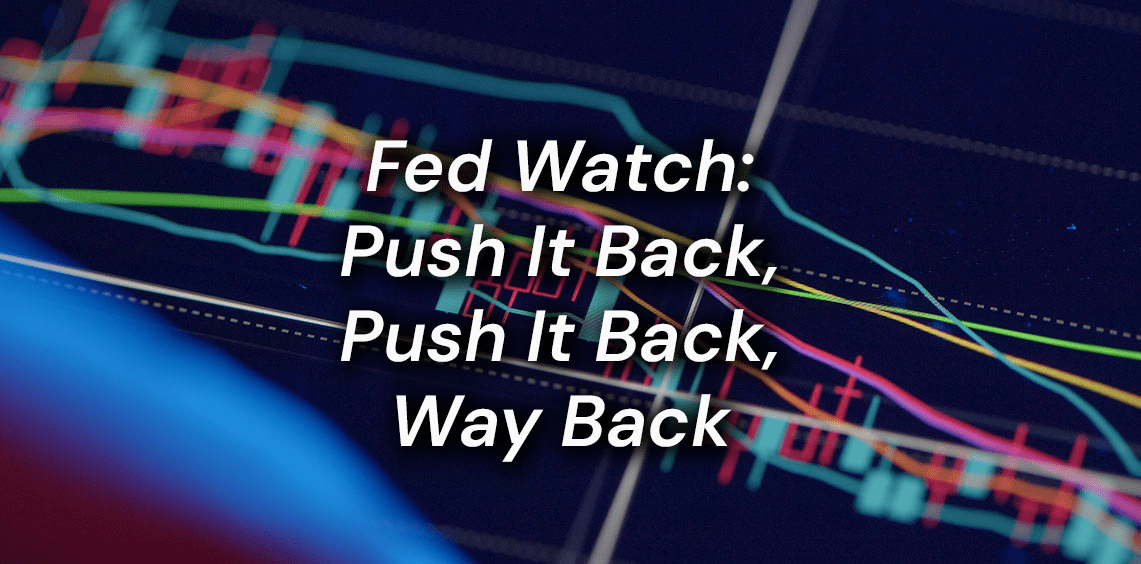Last week’s market narrative focused on the notable action in the bond market which caused ripples in longer duration equities sparked by the Fed’s hawkishness, exactly as I suggested they would last week. We are nearing the top of the hill for the Federal Funds rate. Nothing Powell said, nor the Dot Plots, suggested that the peak of the hill (and interest rates) will be getting much higher. But we are facing a mild downward sloping plateau and the question is how long this high level of rates will be maintained.
The Dot Plot took away two rate cuts from 2024 compared to the June Summary of Economic Projections (SEP). June Dots suggested we could have 100 basis points of cuts in ’24; however there has only been 50 basis points of cuts. A majority of participants suggested another rate hike in 2023—whether in November or December. In general, I don’t believe market participants should put any weight into these Dots as the forecasting reliability has proven to be of little value. In June, the Dots forecasted the U.S. economy growing 1.0% in 2023, but just three months later the revised Dot forecasts showed growth of 2.1% for 2023—quite a startling upgrade. This is the main reason yields jumped, an increase in growth.
Conviction in the higher for longer narrative definitely spooked the markets. Powell spoke about the neutral rate of interest—consistent with 2% inflation and neither expansionary nor contractionary—and that may be higher than the 0.5% (real rate) than previous thought. The Dot Plot still shows the neutral rate at 0.5% – 0.6%, but you can see increased skewness in these estimates with three to four participants having raised their estimates by 100 basis points.
We have shifted into an economy in which higher rates will be more the norm, but not as high as pre-2000. There are signs higher rates are impacting housing. The Homebuilders Sentiment Index, which soared about 30 points from its initial plunge, gave up about half the gains over the last two months. Housing starts came in much below expectations.
There is a big wild card to inflation with recent oil and gas price increases—as bond holders care about headline inflation not just core inflation. These rising energy prices are impacting rates and cutting back purchasing power of consumers. The 10-year nominal bond broached the 4.5% level on Friday and TIPS yields were above 2.1%—these are the highest levels of long-term interest rates in 15 years.
Stocks are outpacing bonds this year, and I still think stocks can do well. If you are worried about the inflationary impacts, stocks are far better hedges than bonds—as companies can pass along their own input cost spikes to consumers. If you bought the inflation hedged bonds at 2% yields, it would take 36 years to double your purchasing power. The S&P 500 however is priced around 18 times next year’s earnings, giving a 5.5% earnings yield. This takes just 13 years to double purchasing power.
As we approach year-end reviews, I think there will be a renewed focus on clients keeping money in checking accounts at banks earning almost nothing, when Treasuries offer over 5.5% and the Fed says it is committed to keeping rates elevated next year. This could create another shift of money away from the banks. This pressures small caps, both because there are more banks in the small cap indexes than in large caps—but also small companies are facing higher borrowing costs from their banks which is restricting lending. I like the valuations on small caps but see the challenges in funding markets until rates head back down.
Past performance is not indicative of future results. You cannot invest in an index.
Professor Jeremy Siegel is a Senior Investment Strategy Advisor to WisdomTree Investments, Inc. and WisdomTree Asset Management, Inc. This material contains the current research and opinions of Professor Siegel, which are subject to change, and should not be considered or interpreted as a recommendation to participate in any particular trading strategy, or deemed to be an offer or sale of any investment product and it should not be relied on as such. The user of this information assumes the entire risk of any use made of the information provided herein. Unless expressly stated otherwise the opinions, interpretations or findings expressed herein do not necessarily represent the views of WisdomTree or any of its affiliates.






